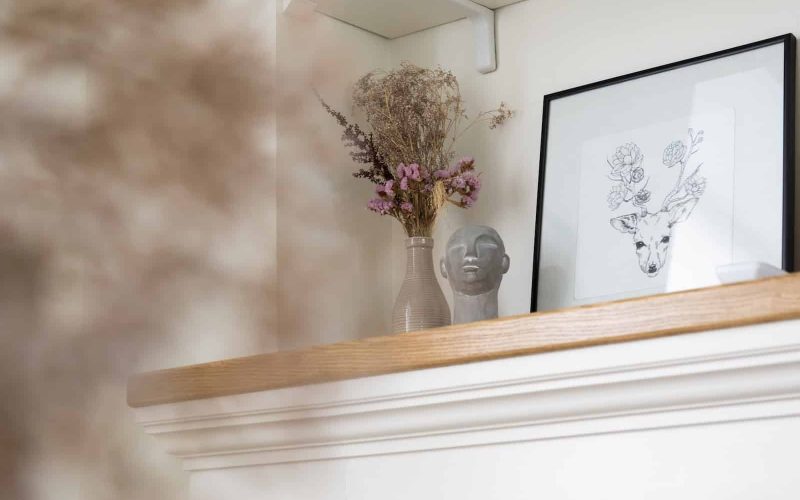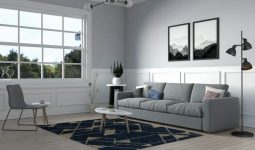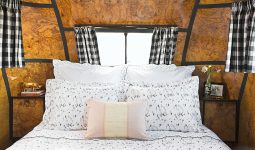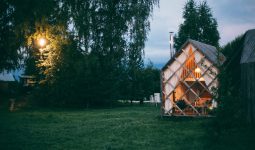When designing the decor in your home, you should know you aren’t limited to furniture, flooring, and color choices ‒ different types of drywall texture are an underappreciated way to bring out some character in your home’s decor.
Modern trends mostly lean towards simple blank walls and focus on color to make a room.
You can add character and charm to a room while still on a budget, even if it’s just a single accent wall, simply by considering one of the different types of drywall texture that will enhance the interior of your home.
While recent trends have emphasized color and accent walls to unite a room, the right textured drywall finish offers personality and unique style for a beautiful aesthetic that a paint choice simply can’t.
Different types of drywall texture can even be used to cover architectural and aesthetic flaws, such as cracks.
From soft modern styles to simple classic techniques, many different types of drywall textures exist for an elegant finished look.
These textures can help you create warm rustic decor, a modern feel, or any style of interior design you desire.
So, if you are looking for various modern drywall textures, you are in the right place.
You are a unique person, and your home should reflect your style. Read on to see our favorite types of textures and where you can use each below.
However, if you think texturing is too difficult and can’t do it yourself, think again! Although texturing may take some practice before you decide to texturize a room in your home, the techniques used to create these wall finishes aren’t as difficult as you might think.
To inspire you, we’ve compiled a list of the different types of drywall textures you can use for your next fancy finish.
Whether you like popcorn style, orange peel, knockdown, or sand swirl patterns, discover the popular drywall textures to inspire your creativity and start your next DIY project.
Different Types of Drywall Texture
Many people assume they have to stick with the standard drywall texture of the classic, smooth finish.
There’s nothing wrong with that, but you shouldn’t hesitate to use more creative textures because you think they’re difficult.
With just a little knowledge and practice, you can easily give your walls a creative texture like swirling sand, orange peel, or popcorn.
More advanced techniques should probably be left to a professional, but many types of drywall textures are easy to learn and are what even a beginner can do. You can practice in your safe zone and acquire skills in no time.
Changing textures is also a great strategy for covering up cracks or giving a sleek look, and it can also add depth to a crowded room.
So, if you are redoing walls at home and want to get creative with drywall textures, you should consider picking one of these 13 Types of Trendy Drywall Textures.
1. Popcorn Drywall Texture
Popcorn texture is probably the most famous of the different types of drywall textures.
Popcorn texture for walls and ceilings became popular in the 1960s during the housing boom as a timeless look.
This wall texture made it easy to hide imperfections, making it attractive to builders.
It also required no painting or refinishing, appealing to homeowners as a low-maintenance solution.
This style is also known as acoustic texture due to its noise-dampening properties, and you may even hear it referred to as cottage cheese texture.
It’s often found in rooms with speakers or other sound components and is best for living rooms and bedrooms.
You must combine the drywall popcorn texture with water, polystyrene, and Styrofoam to create your signature look when applying.
Using a compressor and spray gun, apply the resulting mud mixture to texture your wall.
Note that the texture of the popcorn is difficult to remove, so you have to make sure you are committed to this look.
2. Orange Peel Texture
Orange peel is another common one of the different types of drywall texture because it’s easy to apply and provides a classic look.
If you’ve ever held most citrus fruits like an orange, you know what this texture should look and feel like. The thick rinds have a fine pit consistency.
The orange peel wall texture has an equally understated feel and is ideal for your bedroom, office, playroom, or living room.
Before applying the orange peel texture, the walls must be cleaned, sanded, and primed.
Next, dilute the drywall mud with water until it becomes a thick liquid, and apply it with a sprayer and compressor.
Roll the roller over the surface of the still-wet slurry. Repeat the process one more time when the first coat is dry.
3. Knockdown Drywall Texture
Knockdown’s texture is similar to orange peel’s. For starters, the mixing and applying process is almost the same.
However, you will need to use a trowel or finishing knife to smooth out any irregularities in the crumbled surface’s texture. This step “knocks down” the texture and flattens its features.
The resulting style is much more obvious than orange peel walls and resembles a traditional stucco application.
This technique provides a warm, rustic feel that would work well in a rustic, Mediterranean-inspired kitchen.
The knockdown texture is ideal for kitchens, dining rooms, and living rooms, adding warmth and depth.
4. Spray Sand Texture
The texture of a spray sand wall ultimately looks a lot like the orange peel style without the distinctive cracking.
However, different materials and application methods are involved.
The choice between crushed sand and orange peel depends largely on personal application preferences.
To use this technique, mix a bag of sand with water or a primer and let it sit overnight to give the sand time to settle.
Afterward, you can apply the mixture to the wall using a spray gun the following day.
Spray sanding can take a lot of time and patience, but the result is a durable, even surface.
5. Combed texture
The comb is a popular texture with a stylish groove on the wall or ceiling.
Its name comes from its characteristic pattern, which resembles the marks made by a hair comb.
In this case, the texture is usually applied with a toothed trowel. These slots can be evenly spaced for people who like symmetry or unevenly spaced for a unique design.
To apply a combed texture, roll the drywall compound onto the wall, then gently use a toothed trowel to create patterns and designs in the still-wet mixture. There are several modern styles of comb texture application.
Some people create wider arcs, like the shape of a rainbow, while others create overlapping concentric circles.
The most popular pattern is the half-fan, which repeats similarly to a fish scale pattern.
This style, based on the different types of drywall texture, is excellent in a vintage-inspired room with art decor elements.
You can get creative with combed textures and use all the desired shapes.
6. Sand Swirl
The sand swirl wall texture combines two techniques: spray sand texture and comb texture.
First, mix a bag of sand with water or a primer and let sit overnight; the next day, you can apply this mixture to the wall.
To achieve the sand swirl texture, apply the mud in the same fan shape you would use when applying a combed texture to the wall.
Instead of a toothed trowel, you can use a brush with thick bristles (medium or even thick).
You can create patterns, such as interlocking spirals or row fan shapes.
If you want to try out more intricate designs, use a traditional paintbrush. This whimsical texture is an excellent option for a child’s room.
7. Slap Brush Texture
Also known as a crow’s feet or stomp brush, the texture of the slap brush has an exceptionally unique yet natural look that would fit into a craftsman-style home.
You can use a standard, ready-mixed drywall compound and mix it until it has a fine, runny consistency.
Using a paint roller, apply the mud to a small, adjustable area in a thin, even coat.
While the mixture is still wet, you will need a slap brush, which can be any stiff-bristled brush.
Dip the bristles of this brush into your bucket of drywall mud before tapping it firmly against the wet mud on the wall.
Repeat this repeatedly, and don’t be afraid to overlap the brush strokes. The result will be a ridged, intricate texture resembling sunburst or flower petals.
8. Slap Brush Knockdown
Slap brush knockdown, also known as stomp knockdown, is another type of drywall texture that combines two texture styles: slap brush and knockdown.
You can achieve a cool and creative pattern by combining the slap brush technique with the knockdown smoothing process.
You must start by recreating the brush texture on a small wall section.
This involves rolling a thin layer of compound mud evenly onto the wall and applying the texture with a slap brush.
Once you finish the brush texture section, let the drywall mud dry for 10-15 minutes.
Next, you’ll move on to incorporating the knockdown technique by pulling out a wide drywall knife and knocking off the top of the bumps left by the slap brush.
Do this until the room is complete! This texture looks excellent in Mediterranean and Southwestern style decor.
9. Skip Trowel
The skip trowel is a drywall texture made from mud or plaster.
Although this textured interior look is difficult to create, the attractive and artistic effect is worth the extra work.
Plaster or drywall mud has to be applied by hand, which is very time-consuming.
To apply this texture, use a large curved knife to spread very thin layers of the material of your choice.
Then, holding the knife at an angle, jump across the wall’s surface in overlapping circles.
Finally, you’ll have to go back over the still-wet mud with a clean, held-at-an-angle trowel to add some texture, but leave the rest.
This layering technique creates a spectacular stucco effect.
10. Spanish Lace Texture
Spanish lace is an elegant and beautiful wall texture. It is similar in appearance to rolled lace but also challenging to create.
Available in light and dark shades, this lace texture is often used by homeowners to cover up cracks, stains, and other imperfections.
Spanish lace is an intricate and ornamental wall texture among the different types of drywall textures, making it a great choice for a fixer-upper house.
Full of character, the lace texture is a particularly decorative variant of the slap-brush knockdown style.
You can use mud or drywall plaster with the same batter-thin consistency as the slap brush technique, but you can apply it with a roller or a spray gun.
While the clay is still wet, you can use a knife to carve intricate, repeating designs like a Spanish lace mantilla.
Then, paint your textured designs with the color of your choice. Once this layer dries, you will need to repeat the whole process.
Carve a slightly different lace pattern to add extra variation. To complete the look, coat the texture again with a lighter shade of the same color.
11. Rosebud Drywall Texture
The texture of Rosebud drywall is, in principle, very similar to the slap brush technique.
It is usually very common on ceilings in the Midwest United States.
Mix the drywall compound until it is thin and runny, then apply one section at a time. Then, get a round brush with thick bristles.
You may find some rosebud-style soft bristle brushes listed explicitly as suitable for applying rosebud textures.
Stomp this brush evenly into the drywall compound, then tap it firmly and deliberately against the wall.
If you had used the slap brush technique here, you would have overlapped the brush marks.
On the other hand, the texture of a rosebud is much more precise.
You want each round print to be crisp and clear to resemble the crisp lines of a rosebud in full bloom.
This style would be great in a sunroom that overlooks a garden or a romantic bedroom.
12. Venetian Plaster Finish
Venetian plaster is a texture for walls and ceilings obtained by mixing plaster with marble dust and applying it in thin layers with a spatula.
The multiple tiers are then polished to create a smooth, sleek surface that adds an extra character dimension to your home.
Compared to most of the other types of drywall texture in this article, the Venetian plaster finish is one of the more sophisticated and expensive options.
Texturing walls for a practical and artistic finish is not a new phenomenon.
The Venetian plaster finish is an ancient style and has been documented for hundreds of years as a more refined version of plaster.
Today, this particular technique is considered relatively high-end compared to other finishes.
You can find it in famous buildings worldwide, including museums and other places with impressive architecture.
While the Venetians devised a complex formula for plaster, you can now make a simpler version by mixing plaster, marble dust, and water into a putty-like mixture.
Using a steel trowel, apply a thin layer to the wall, carefully varying the length and direction of the strokes.
You should deliberately avoid patterns and ensure the strokes overlap for enough coverage.
Further, let the plaster dry completely for about five hours, then smoothen the surface by sanding and buffing.
This process should then be repeated several times. Seven or eight coats would not be considered excessive.
Allow the coating to dry, then sand and buff between each application.
The result will show many variations in texture and color gradation, and some areas will be so polished that they appear to shine.
It is a laborious process that uses many layers mixed with marble dust, which makes it very expensive.
13. Hawk and Trowel
The hawk and trowel drywall texture has a natural impact as it resembles flowing waves and sometimes random circles of mud.
Like the floral-inspired styles of rosebuds and shell-shaped comb styles, this pattern would add a lovely organic element to Art Nouveau decor.
This technique is named after the tools used during the application process.
As it’s known, a trowel is a flat metal tool, often rectangular. On the other hand, a hawk is a flat metal plate with a handle attached to it.
Use both tools to add large amounts of drywall along the wall, but remember that this technique requires quick hands and lots of practice.
Conclusion
Now that you have some basic knowledge of the different types of drywall textures, deciding which style will work best for you should be easier.
Many of the types above are close relatives because they use very similar techniques, and sometimes, the differences are only a matter of degree.
The knockdown texture compared to the orange peel texture demonstrates this fact.
Whatever you decide on the walls in your home, know that all the different drywall textures mentioned above can be flexible.
You can adjust the size of the swirls, the shape of the combed texture, and the amount of flattening in the knockdown style.
Especially if you’re the creative type, give yourself the freedom to experiment with how you adjust whatever texture you choose.








